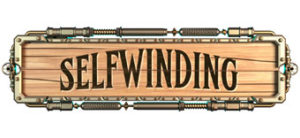Figuring out what makes up a story and how to make those elements speak to each other can be one of the more elusive aspects of craft. While elements can be developed and adjusted in revision, it’s important to understand how those ingredients work together. In one analogy, you might think of writing a story as making a sandwich. You know that at the end of the process you’re going to have a sandwich and, before you start, you have to lay out your ingredients. The same is needed for writing a story.
Every sandwich starts and ends with bread. Like a sandwich, frequently the beginning and ending of a story show the same image so the reader can see how the protagonist has changed from the beginning to the end. This “image” might be the protagonist’s home or it could be a theme on which the protagonist now reflects (for example, in Back to the Future, Marty finally stops being baited when his bravery is called into question, or in a series like Harry Potter, it starts with Harry unable to do magic and without a family, and ends with Harry as a powerful wizard with lots of friends and support). Bookending the narrative with similar scenes can show the character growth or how the world has changed as a result of the story events.
Condiments go on the sandwich next. Personally, I like mustard on most of my sandwiches, but I prefer mayo for turkey. You may prefer honey mustard to yellow; I like deli mustard or a nice spicy brown. All this talk of condiments and preferences is really a lot of talk about flavor. Just like the condiments, the voice and atmosphere provide the flavor for any story. A narrator who is sarcastic is going to speak very differently from one who is literal or innocent. The atmosphere that voice helps evoke is going to steer the course of the story sandwich—is it spicy? Mild? Tangy? Sweet? Bold? Understated? The voice and tone of the story can influence and direct the reader’s experience.
The meat is your plot, and in making this sandwich we need to lay it on thick to put meat on our reader’s bones. Here’s the important thing to note about plot: plot is derived from characters. The protagonist’s decisions make up the plot. So while the meat is the plot, the meat is also the characters. When Katniss volunteers to go to the Hunger Games instead of her sister, she propels the plot forward. When Harry, Ron, and Hermione decide to go after the Sorcerer’s Stone instead of getting an adult, they propel the plot forward. When Luke Skywalker leaves Tatooine with Obi-Wan, he propels the plot forward. The meat—the characters and the plot—are what make the story and the sandwich.
When I make a sandwich I’m going to put cheese on it, so this story sandwich gets cheese. Cheese is known for being a little fatty and a little caloric, so it makes sense that in the story sandwich, the cheese represents the subplots. Subplots are the delicious bits of a story that further character development and often complicate the main plot. Ideally the cheese and meat work together. Both contain protein—exactly what puts muscle on the story—but they’ve got different tastes and textures and nuance. One thing I will warn, if you like a stinky cheese that distracts too much from the meat, your sandwich may be a little lopsided, so use a strong cheese sparingly to keep the story sandwich balanced.
A good sandwich—I’m talking a really good sandwich—is going to come with lettuce, tomato, or other veggies. Veggies are good for you, and in a story sandwich that still holds true because veggies represent the conflict and tension. Conflict and tension are good for stories. Stories without conflict or tension are bland and often unfulfilling. Conflict gives a story crunch. Tension makes things juicy. Both are good for helping a reader digest the story and get something satisfying out of it. A hero overcoming, a romance defying all odds, the underdog winning—all of those satisfying and cathartic beats come from the conflict.
This may sound like a simplistic way to describe a story (honestly, it is), but thinking about the necessity of these story elements when creating a delicious story sandwich will hopefully help you think about how these elements work together and consider what each brings to the finished story.
